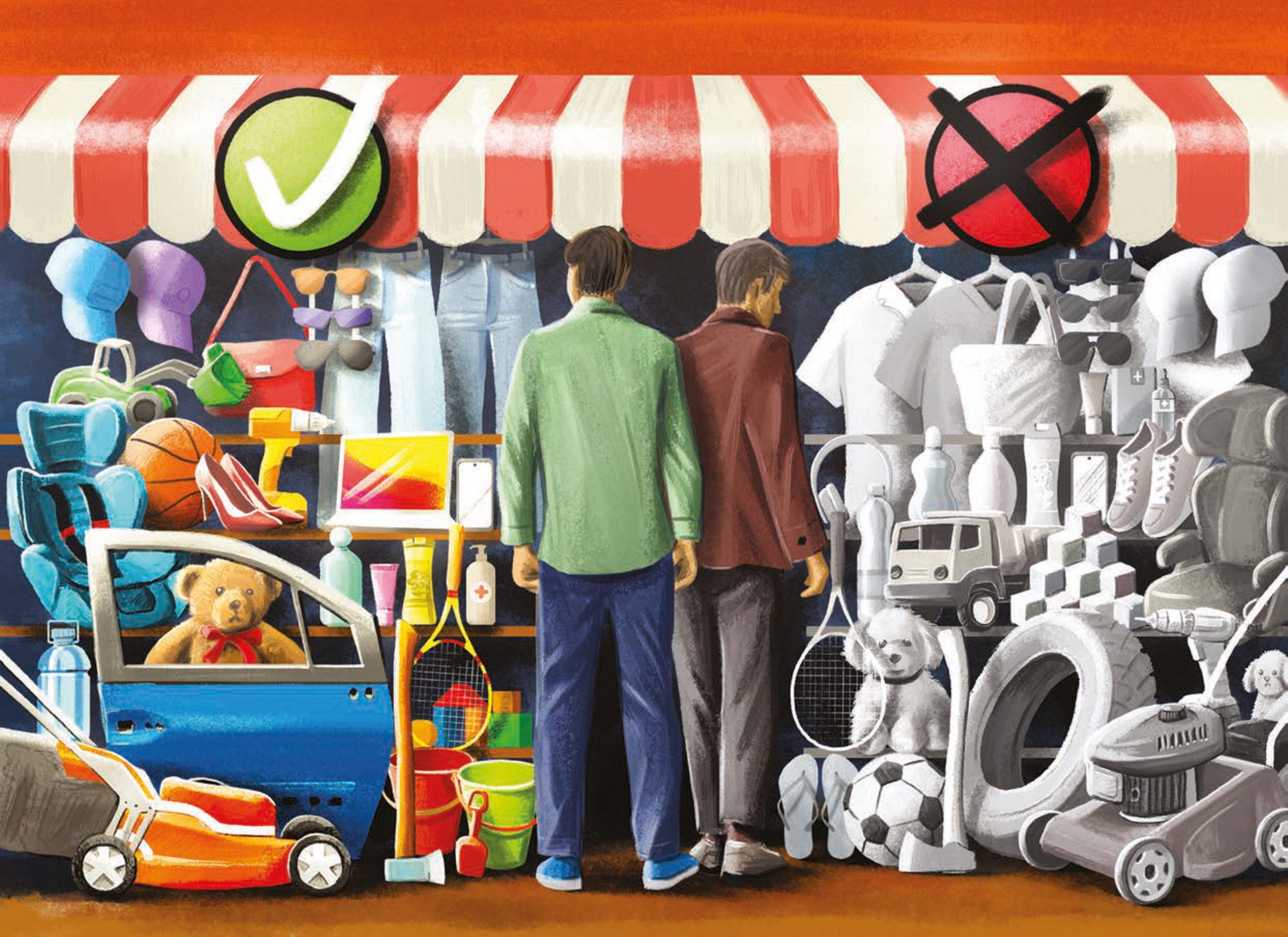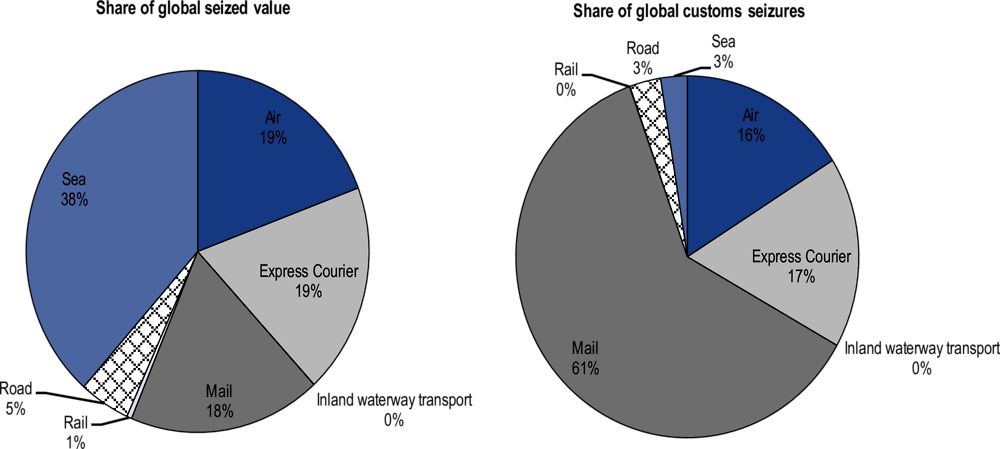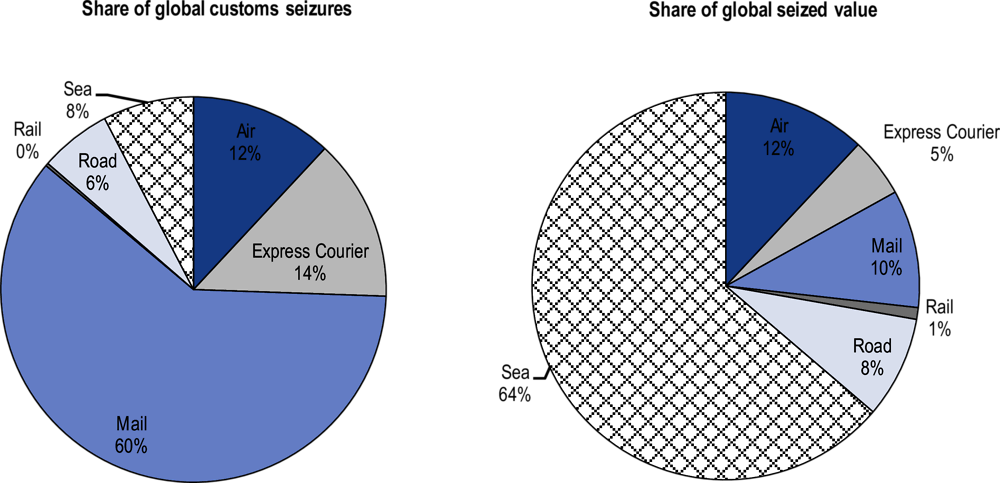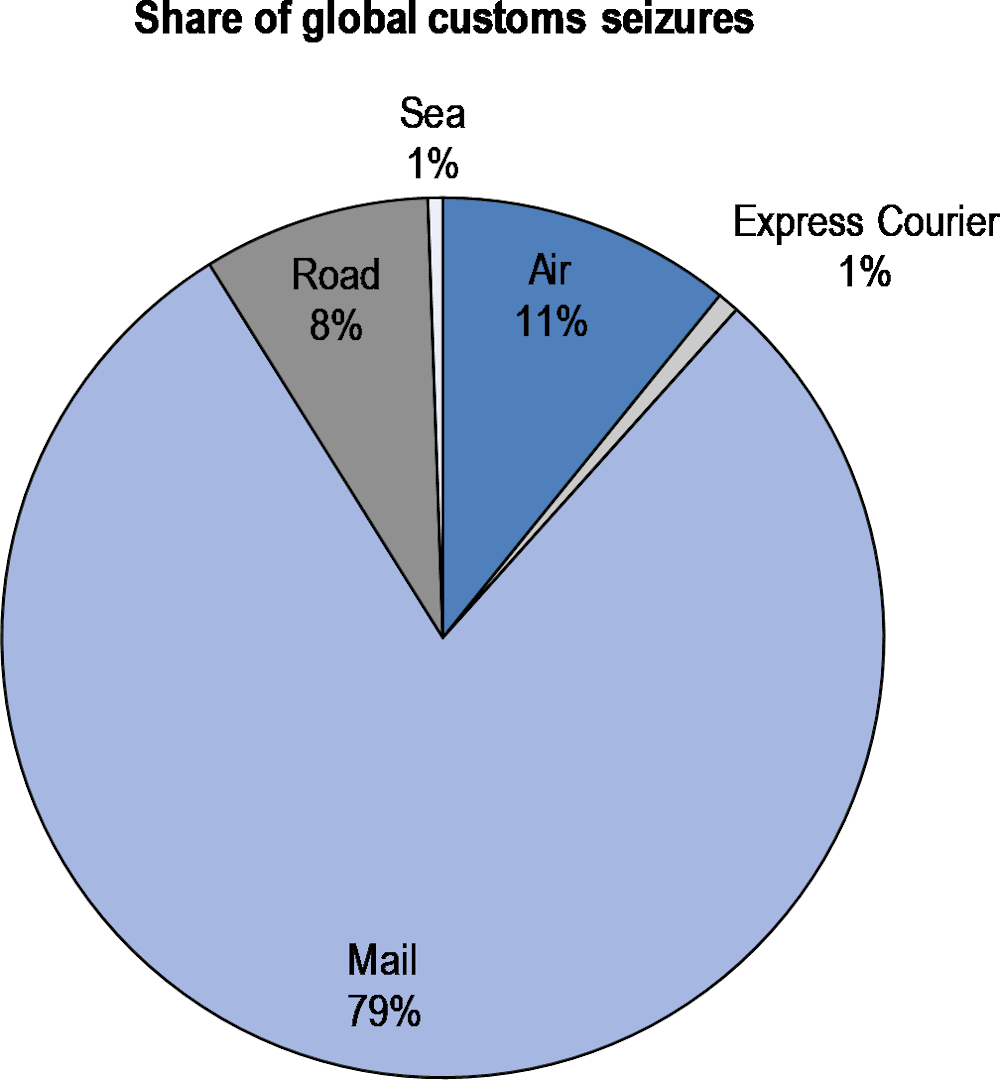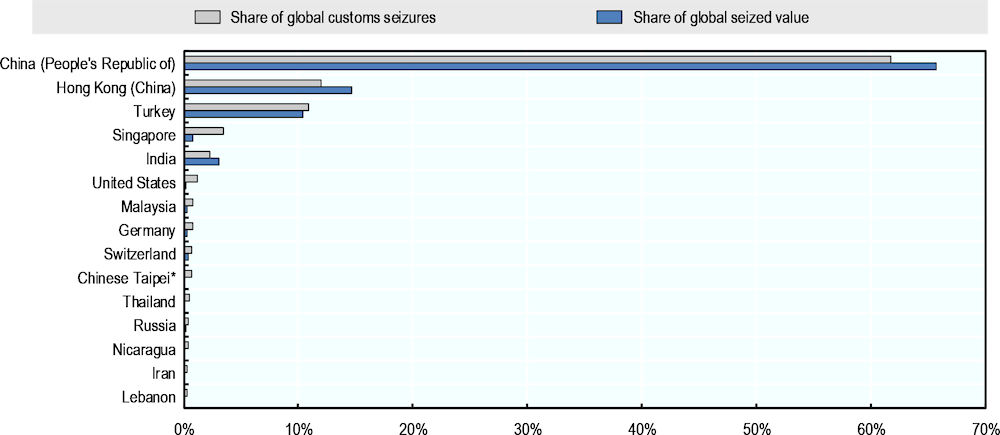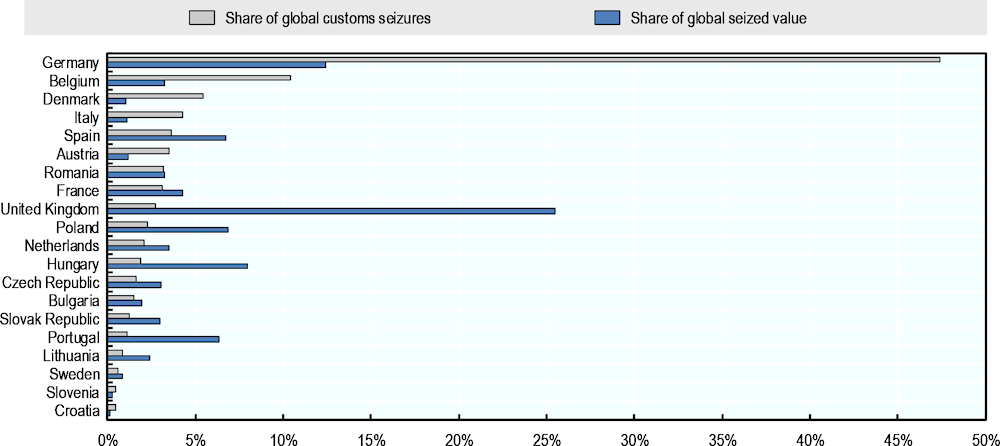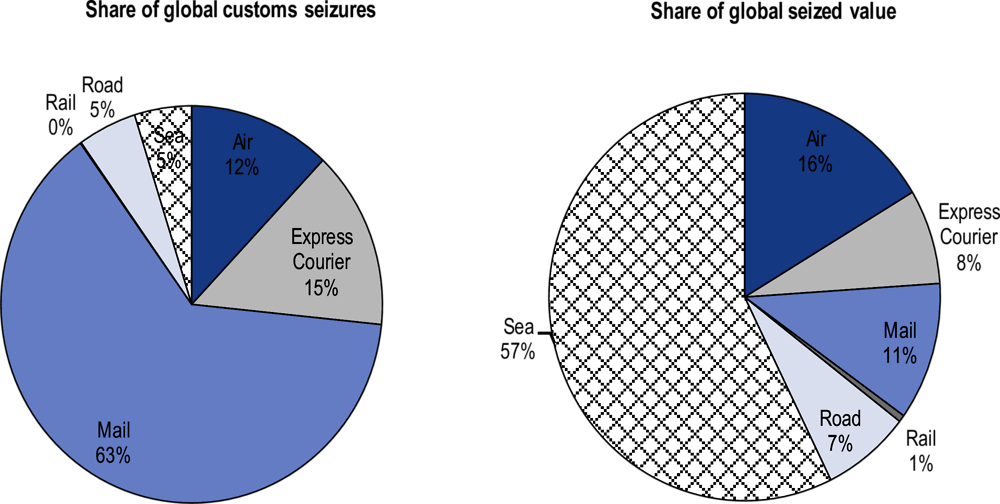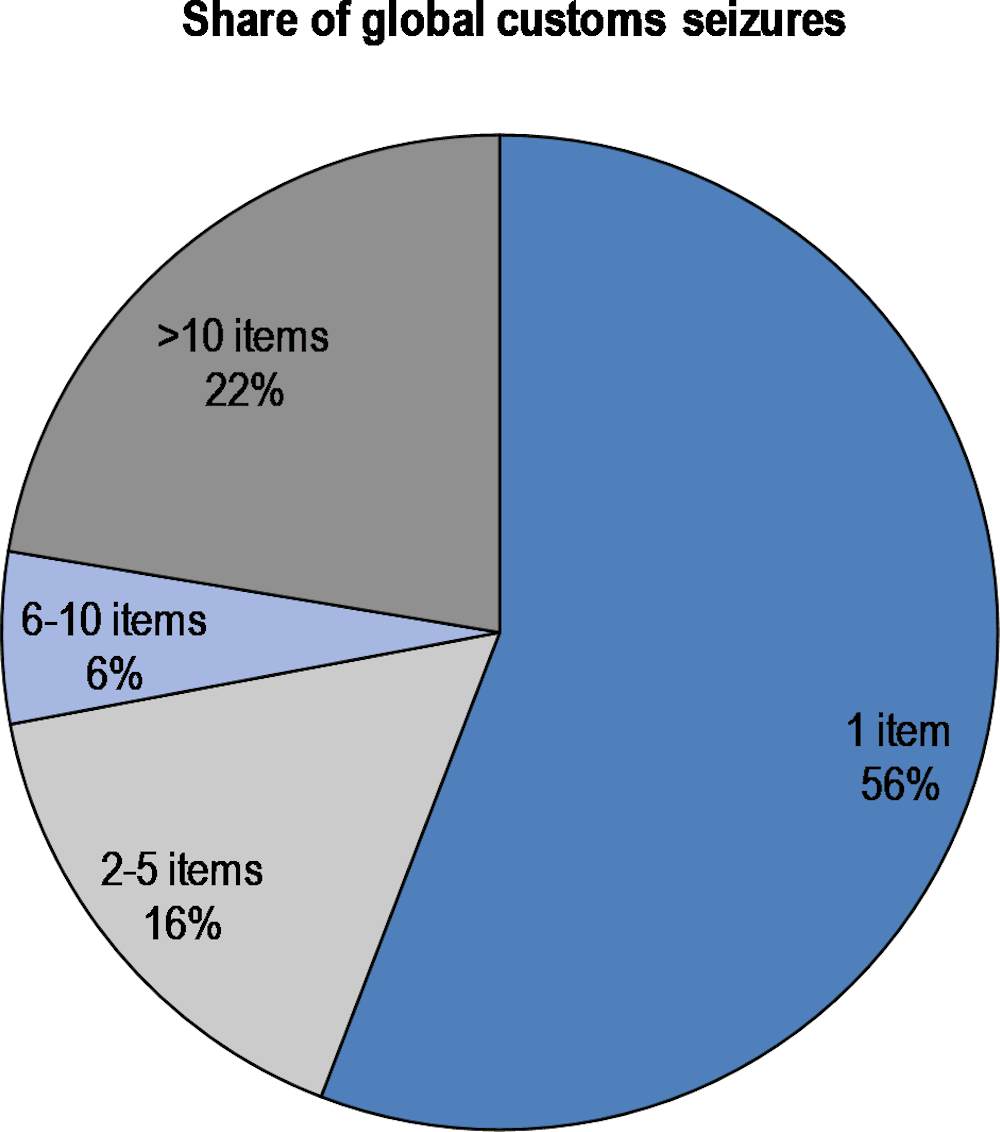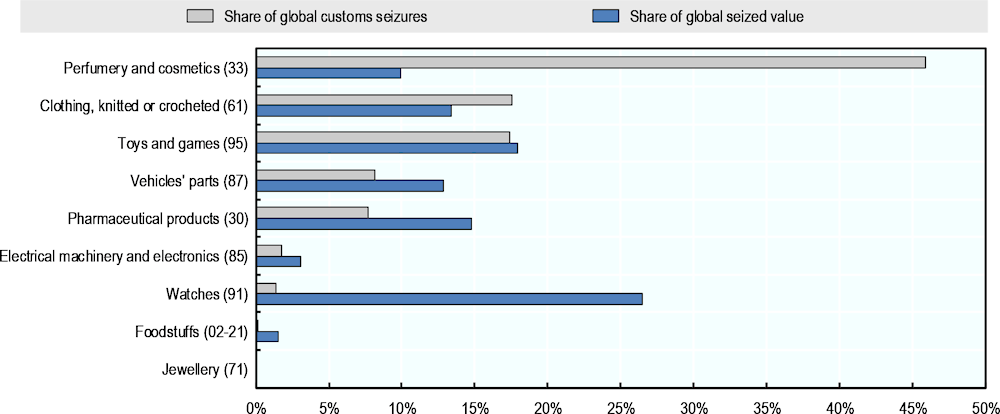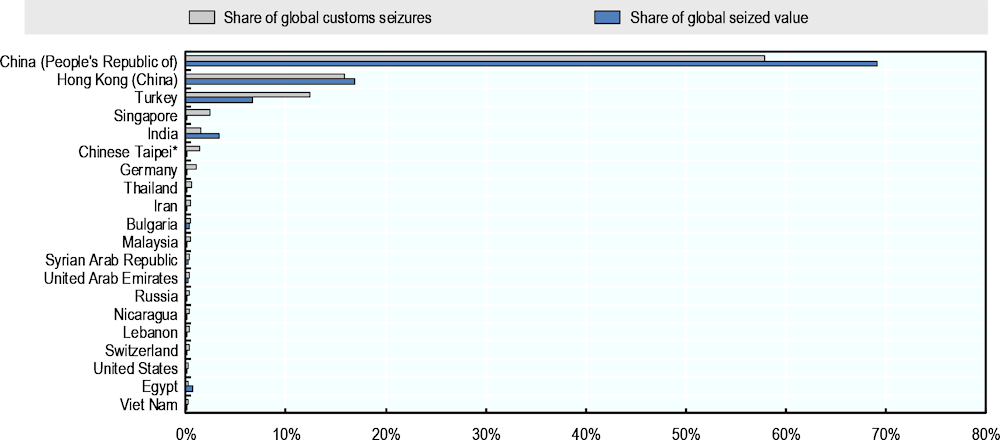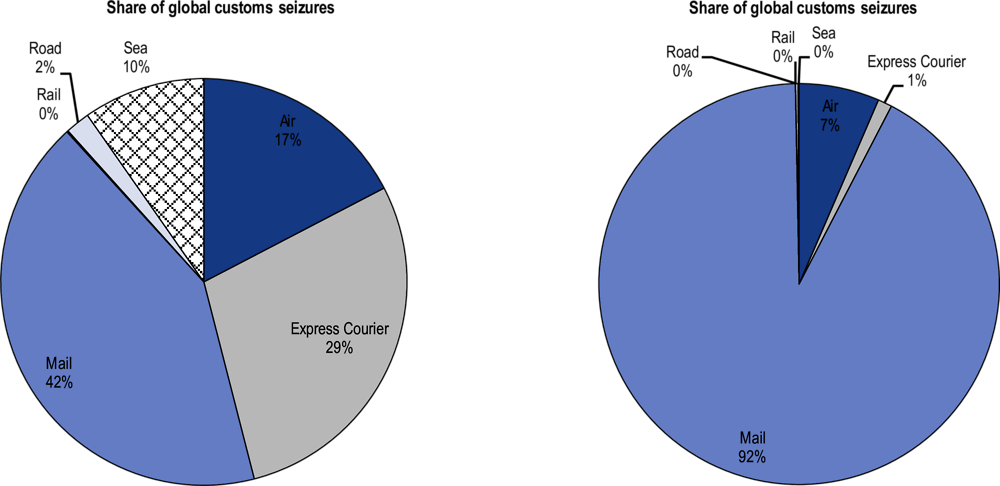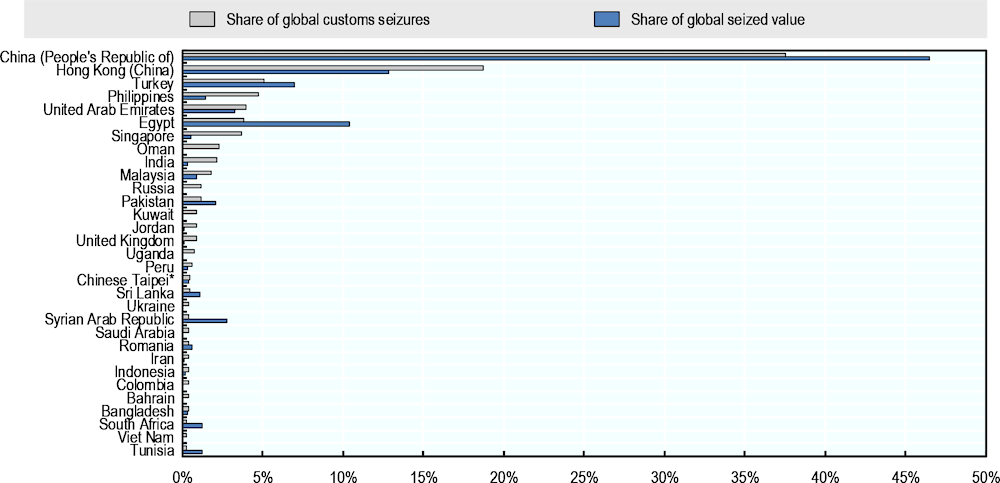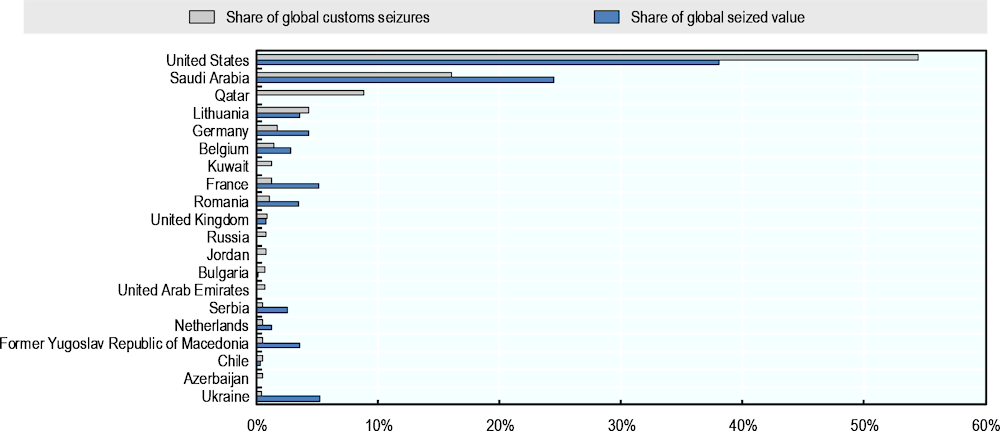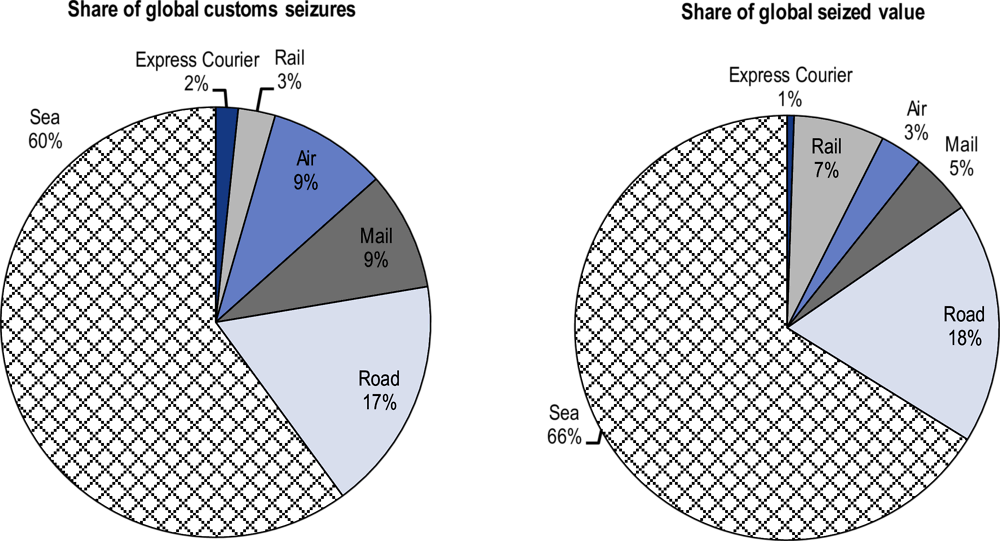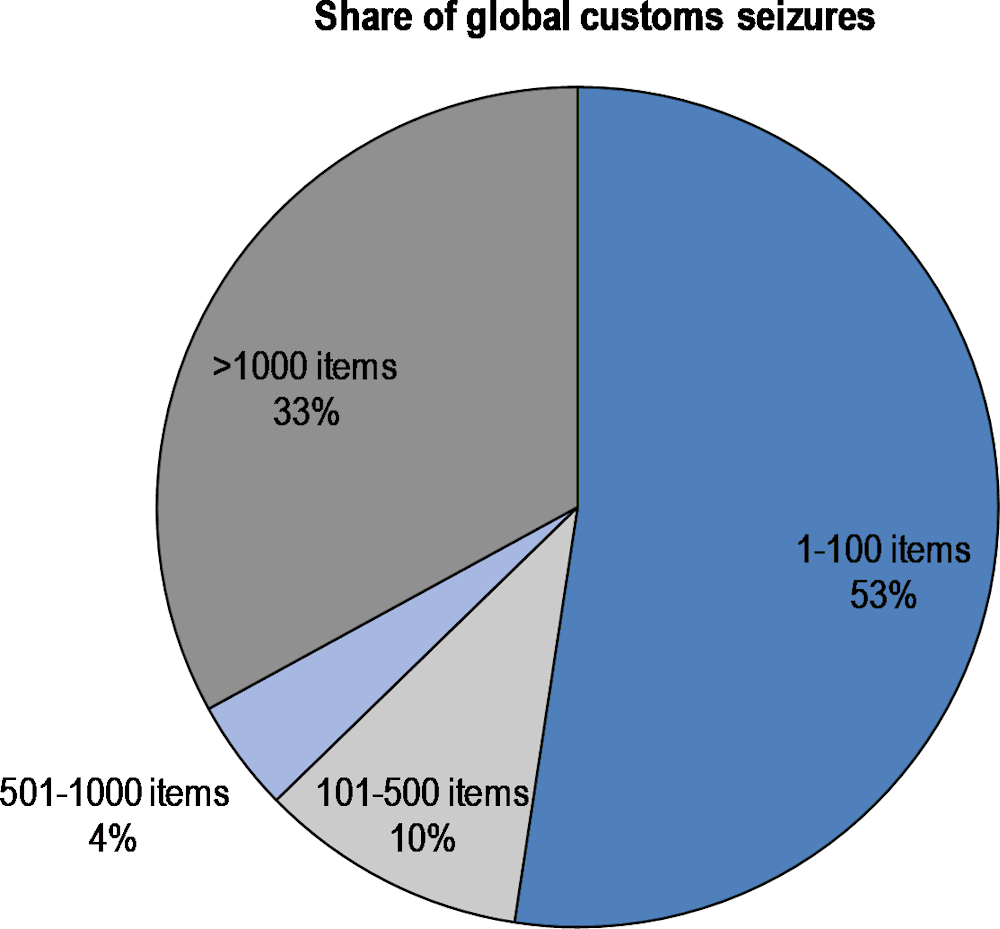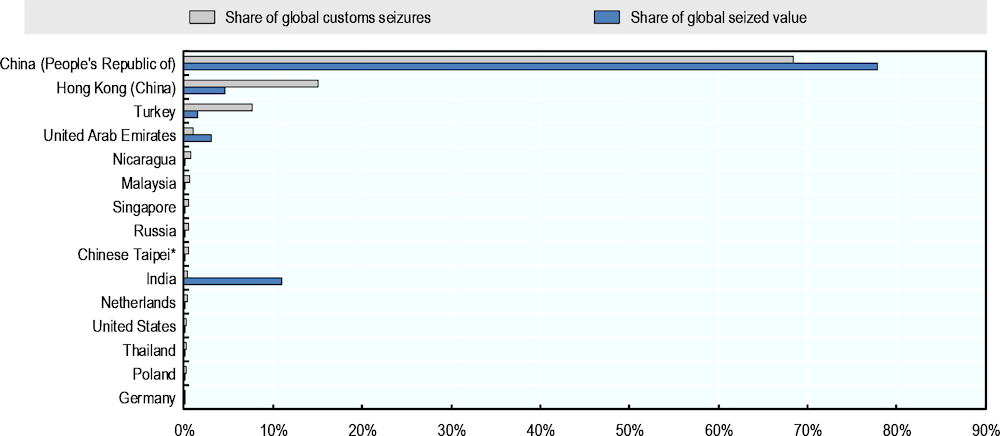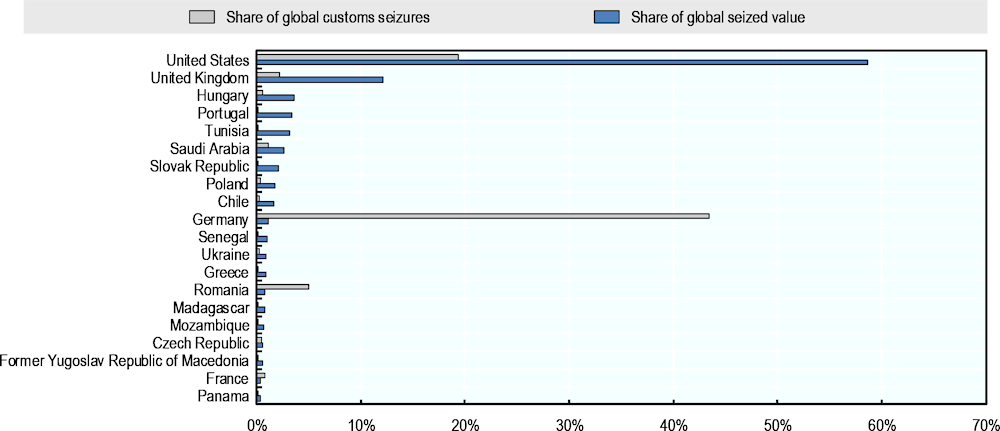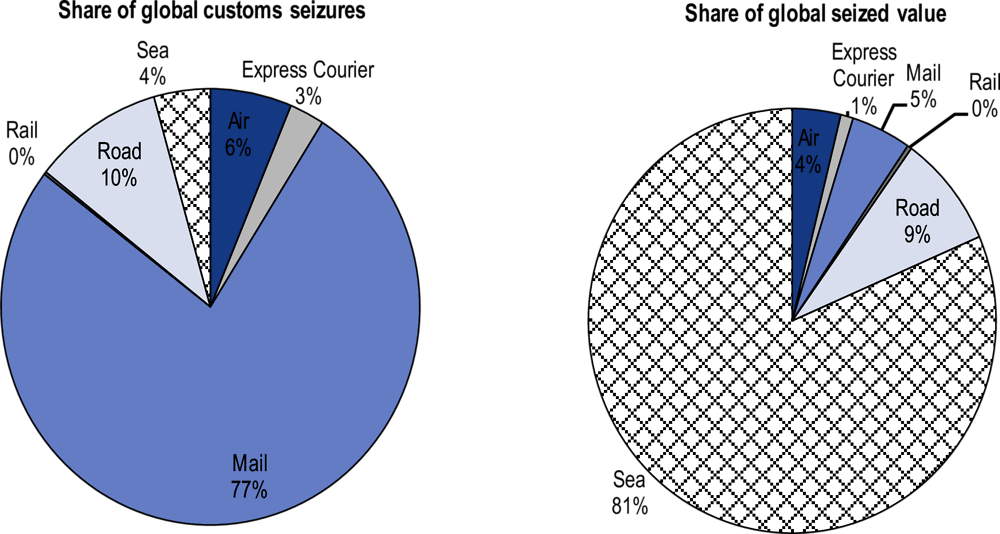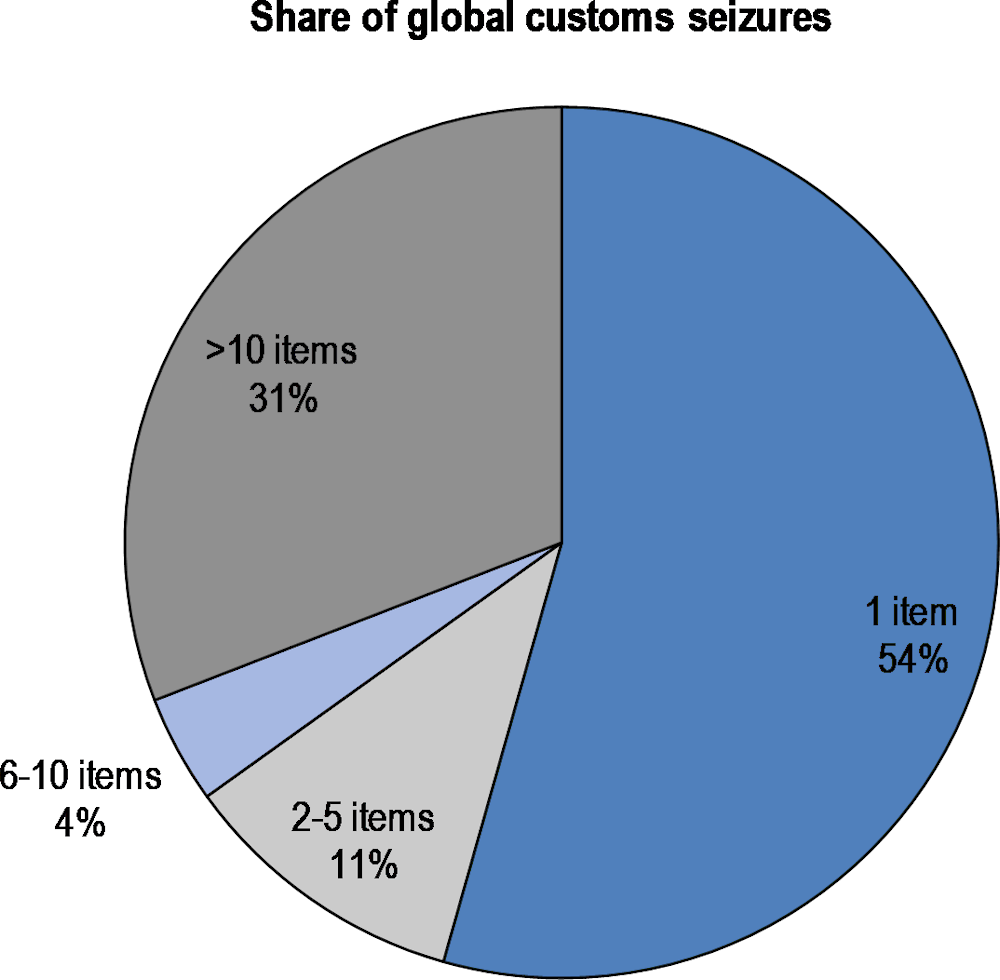The focused approach takes into account the most dangerous types of counterfeit goods: foodstuffs, pharmaceutical products and those goods’ categories, that are most frequently subject to safety alerts. This is established using the databases on product safety problems and product recalls. In particular, as discussed in Chapter two, this section uses the main products subject to alert in the EU Safety Gate system. This scope includes the following product categories (HS code):
Foodstuffs (02-21)
Pharmaceutical products (30)
Perfumery and cosmetics (33)
Soap (34)
Clothing, knitted or crocheted (61)
Other made-up textile articles (63)
Jewellery (71)
Electrical machinery and electronics (85)
Vehicles’ parts (87)
Watches (91)
Toys and games (95)
Specifically, pharmaceuticals, foodstuffs and cosmetics have been included in whole, at a two digit level, as structured interviews with enforcement officials underscored the wide presence of risky goods in these categories. For all other categories, only some subcategories of products at four-digit level were included, based on the specific indications in the Safety Gate database. These subcategories are listed below:
Soap (34)
HS 3402: Organic surface-active agents (not soap); surface-active, washing (including auxiliary washing) and cleaning preparations, containing soap or not, excluding those of heading n°. 3401
Clothing, knitted or crocheted (61)
HS 6101: Coats; men's or boys' overcoats, car-coats, capes, cloaks, anoraks, ski-jackets, wind-cheaters, wind-jackets and similar articles; knitted or crocheted, other than those of heading n°. 6103
HS 6102: Coats; women's or girls' overcoats, car-coats, capes, cloaks, anoraks, ski-jackets, wind-cheaters, wind-jackets and similar articles, knitted or crocheted, other than those of heading n°. 6104
HS 6104: Suits, ensembles, jackets, dresses, skirts, divided skirts, trousers, bib and brace overalls, breeches and shorts (not swimwear), women's or girls', knitted or crocheted
HS 6105: Shirts; men's or boys', knitted or crocheted
Other made-up textile articles (63)
Jewellery (71)
Electrical machinery and electronics (85)
HS 8504: Electric transformers, static converters (eg rectifiers) and inductors
HS 8516: Electric water, space, soil heaters; electro-thermic hair-dressing apparatus; hand dryers, irons; electro-thermic appliances for domestic purposes; electro heating resistors, not of heading n° 8545
HS 8539: Lamps; electric filament or discharge lamps, including sealed beam lamp units and ultra-violet or infra-red lamps, arc-lamps
Vehicles’ parts (87)
HS 8703: Motor cars and other motor vehicles; principally designed for the transport of persons (other than those of heading n°. 8702), including station wagons and racing cars
HS 8711: Motorcycles (including mopeds) and cycles; fitted with an auxiliary motor, with or without side-cars; side-cars
Watches (91)
Toys and games (95)
HS 9503: Tricycles, scooters, pedal cars and similar wheeled toys; dolls' carriages; dolls; other toys; reduced-size (scale) models and similar recreational models, working or not; puzzles of all kinds
HS 9506: Gymnastics, athletics, other sports (including table tennis) or outdoor games equipment, n.e.s. in the chapter 95, swimming pools and paddling pools
While risks for consumers posed by foodstuffs, pharmaceuticals, cosmetics, electrical machinery and electronics, vehicles’ parts and toys and games are quite clear those associated with categories such as clothing, textiles, jewellery and watches are less obvious. The risks associated with these categories are discussed in Chapter 1 and notably illustrated in Table 1.6. However, it is important to highlight that cases of jewellery containing toxic substances as heavy metals like lead and cadmium, as well as PVC and other plastics have been reported. The main area of concern for watches are dangerous chemicals and toxic heavy metals used for production of strap and watch case. Clothing and textiles may contain toxic materials, or made in a ways that poses risks of chocking or fire. For example, a case of a cushion cover that was made out of extremely toxic textile material containing dyes releasing the aromatic amine benzidine has been reported. In direct and prolonged contact with the skin, this aromatic amine may be absorbed by the skin causing cancer, cell mutations and affect reproduction.
There were just over 70 000 customs seizures of potential dangerous goods from 2017 to 2019 in the HS categories covered. The seizures originated in 170 economies, and were shipped to 115 economies.
